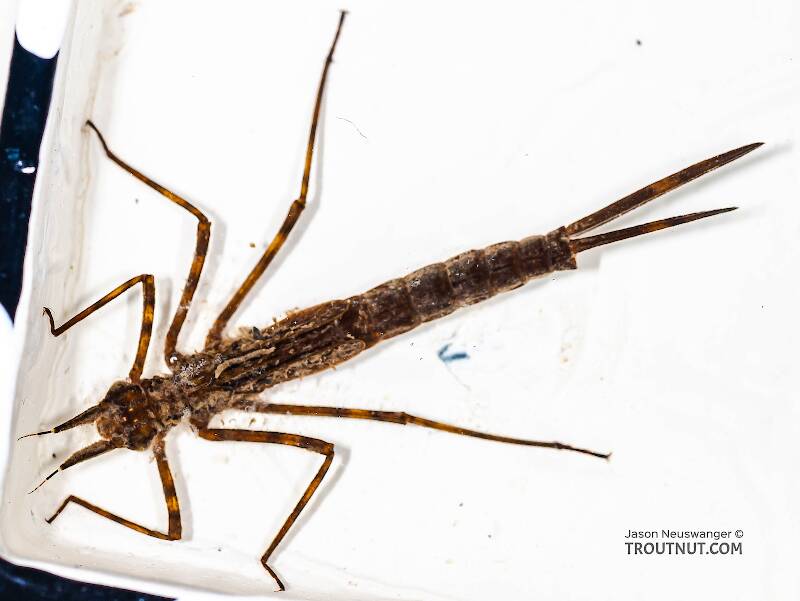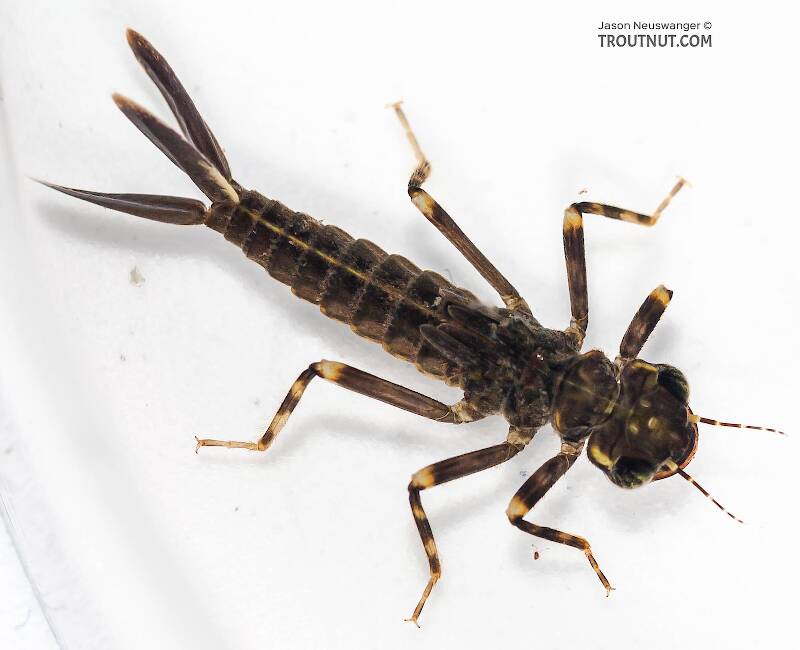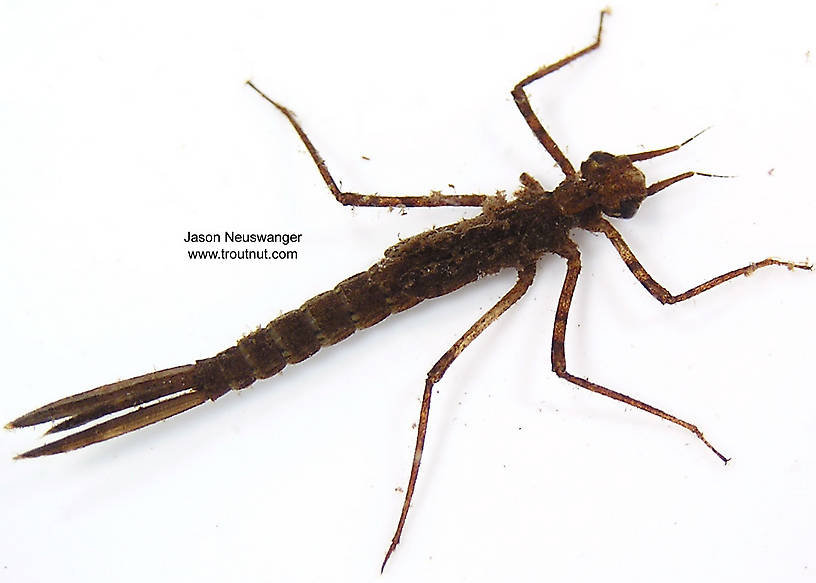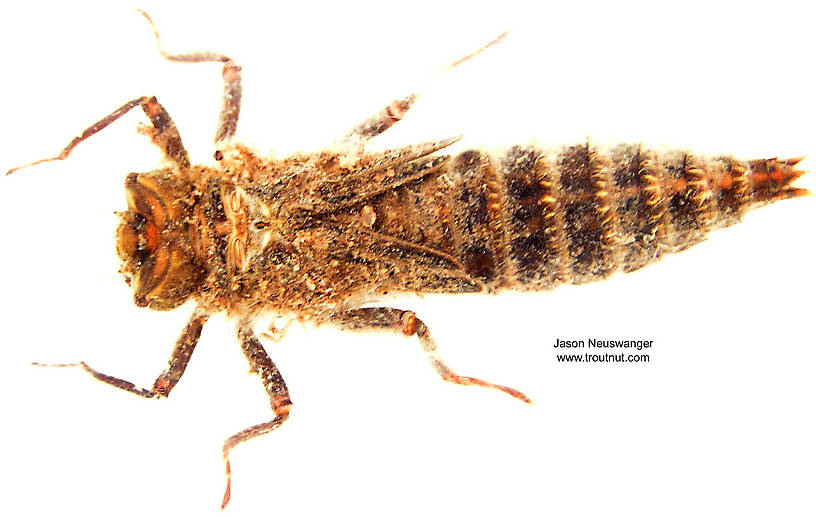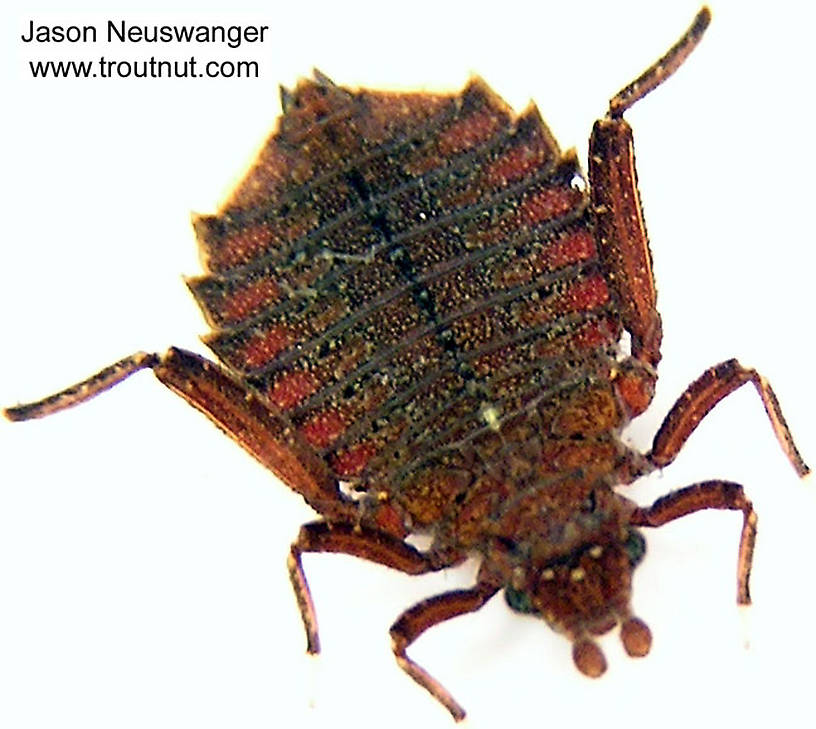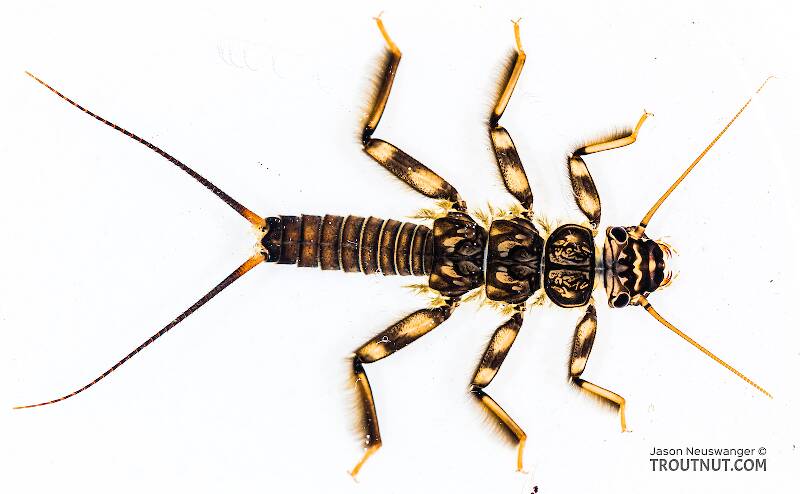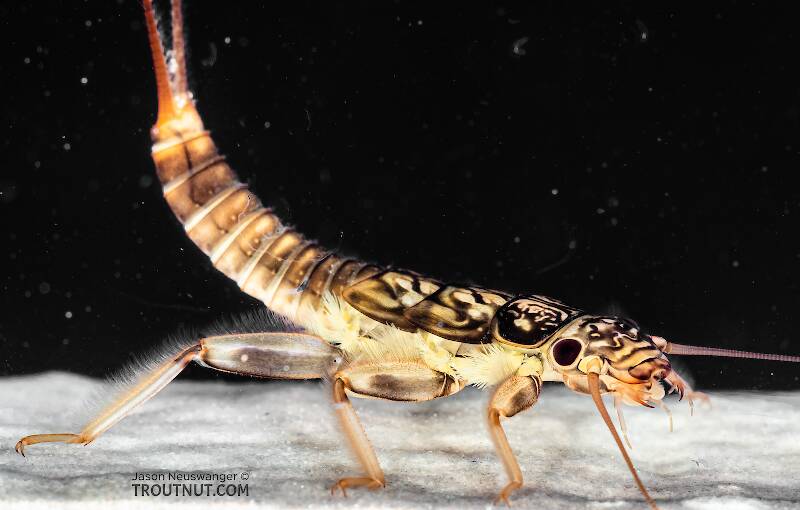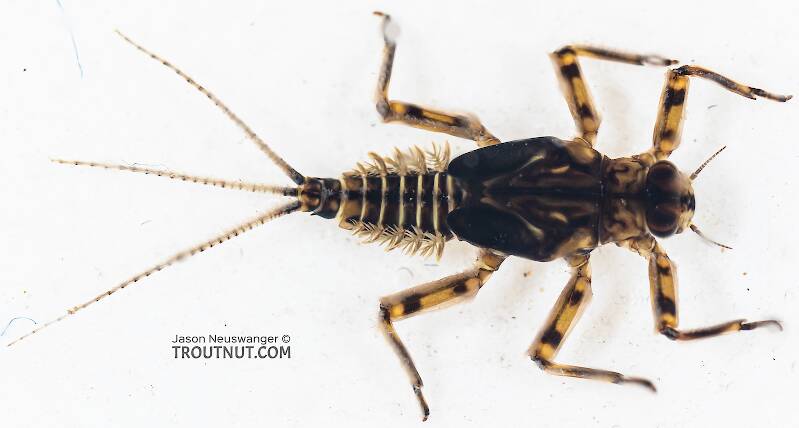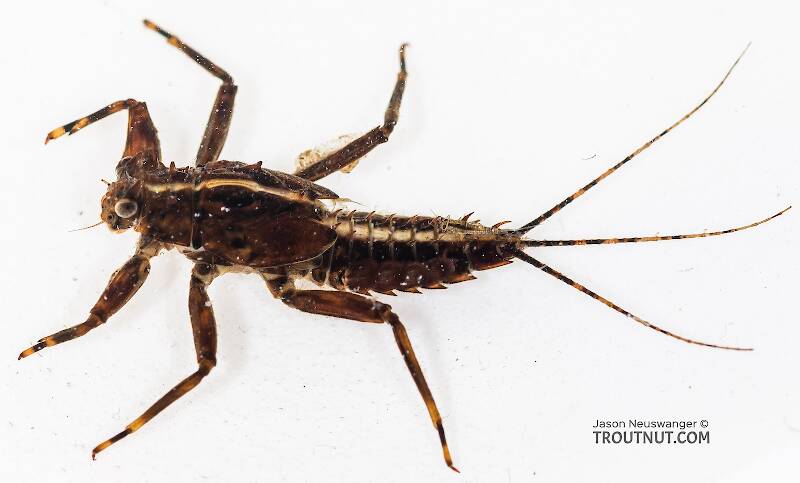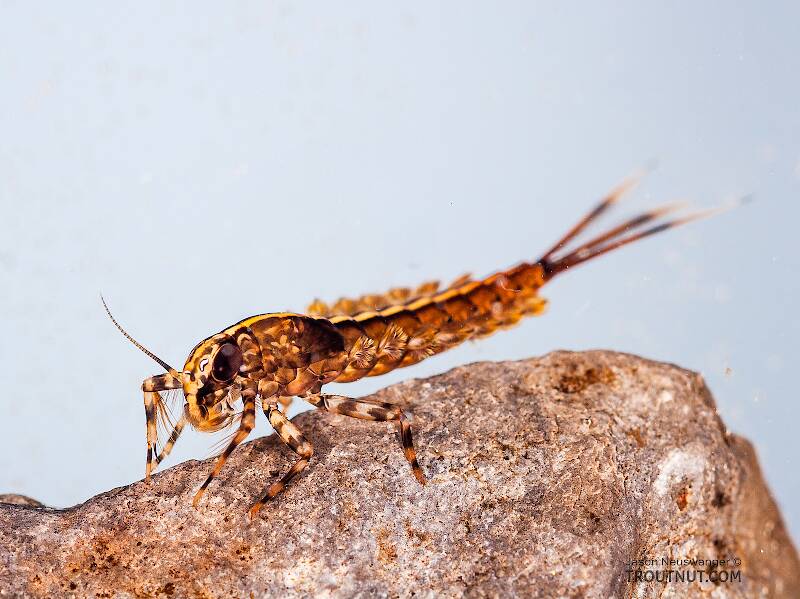
Salmonflies
Pteronarcys californica
The giant Salmonflies of the Western mountains are legendary for their proclivity to elicit consistent dry-fly action and ferocious strikes.
Featured on the forum

This is the first of it's family I've seen, collected from a tiny, fishless stream in the Cascades. The three species of this genus all live in the Northwest and are predators that primarily eat stonefly nymphs Merritt R.W., Cummins, K.W., and Berg, M.B. (2019).

Troutnut is a project started in 2003 by salmonid ecologist Jason "Troutnut" Neuswanger to help anglers and
fly tyers unabashedly embrace the entomological side of the sport. Learn more about Troutnut or
support the project for an enhanced experience here.
Identification: Key to Orders of Aquatic Insect Nymphs, Couplet 3
Identification: Key to Orders of Aquatic Insect Nymphs, Couplet 3
Error: Tried to access a key that isn't live.
Adapted from Merritt R.W., Cummins, K.W., and Berg, M.B. (2019)
| Option 1 | Option 2 |
|---|---|
| Labium (lower lip) mask-like, extendable into a scoop-like structure longer than head | Labium normal, smaller than head, not large and mask-like |
| Remaining orders: Odonata-Anisoptera and Odonata-Zygoptera | Remaining orders: Ephemeroptera and Plecoptera |
5 Example Specimens | 5 Example Specimens |
| Go to Couplet 5 | Go to Couplet 4 |
Adapted from Merritt R.W., Cummins, K.W., and Berg, M.B. (2019)
The current couplet is highlighted with darker colors and a icon, and couplets leading to this point have a icon.
Leads to Orthoptera:
- Hind legs suitable for jumping, with hind femora greatly enlarged
- Abdomen with short tails
- Found in moist places and only temporarily in water
Leads to Couplet 3:
- Hind legs suited for crawling, with hind femora similar in size to front and middle femora, not greatly enlarged
- Abdomen with or without conspicuous tails
- Usually submerged and truly aquatic
Couplet 3
Couplet 3 (You are here)
Leads to Couplet 5:
- Labium (lower lip) mask-like, extendable into a scoop-like structure longer than head
Couplet 5
Leads to Couplet 4:
- Labium normal, smaller than head, not large and mask-like
Couplet 4
Leads to Ephemeroptera:
- Tarsi almost always with one claw
- Usually 3 tails, but sometimes 2
- Plate-like, filamentous, or feathery gills located on sides of abdomen, often present on most middle abdominal segments
Leads to Plecoptera:
- Tarsi with 2 claws
- Always 2 tails
- Finger-like or feathery gills present, but sometimes inconspicuous at base of mouthparts, head, legs, first few abdominal segments, or last abdominal segment
Leads to Odonata-Zygoptera:
- Body slender, with head wider than thorax and abdomen
- 3 long, caudal tracheal gills at the tip of the abdomen resemble paddle-like tails
Leads to Odonata-Anisoptera:
- Body stout, with head usually narrower than thorax and abdomen
- 5 short, stiff, pointed appendages at the tip of the abdomen
Start a Discussion of this Couplet
References
- Merritt R.W., Cummins, K.W., and Berg, M.B. 2019. An Introduction to the Aquatic Insects of North America (Fifth Edition). Kendall/Hunt Publishing Company.
Orders excluded
These orders of Insecta are not included in this key: Trichoptera, Diptera, Coleoptera, Megaloptera, Lepidoptera, Hymenoptera, Neuroptera, Psocodea


